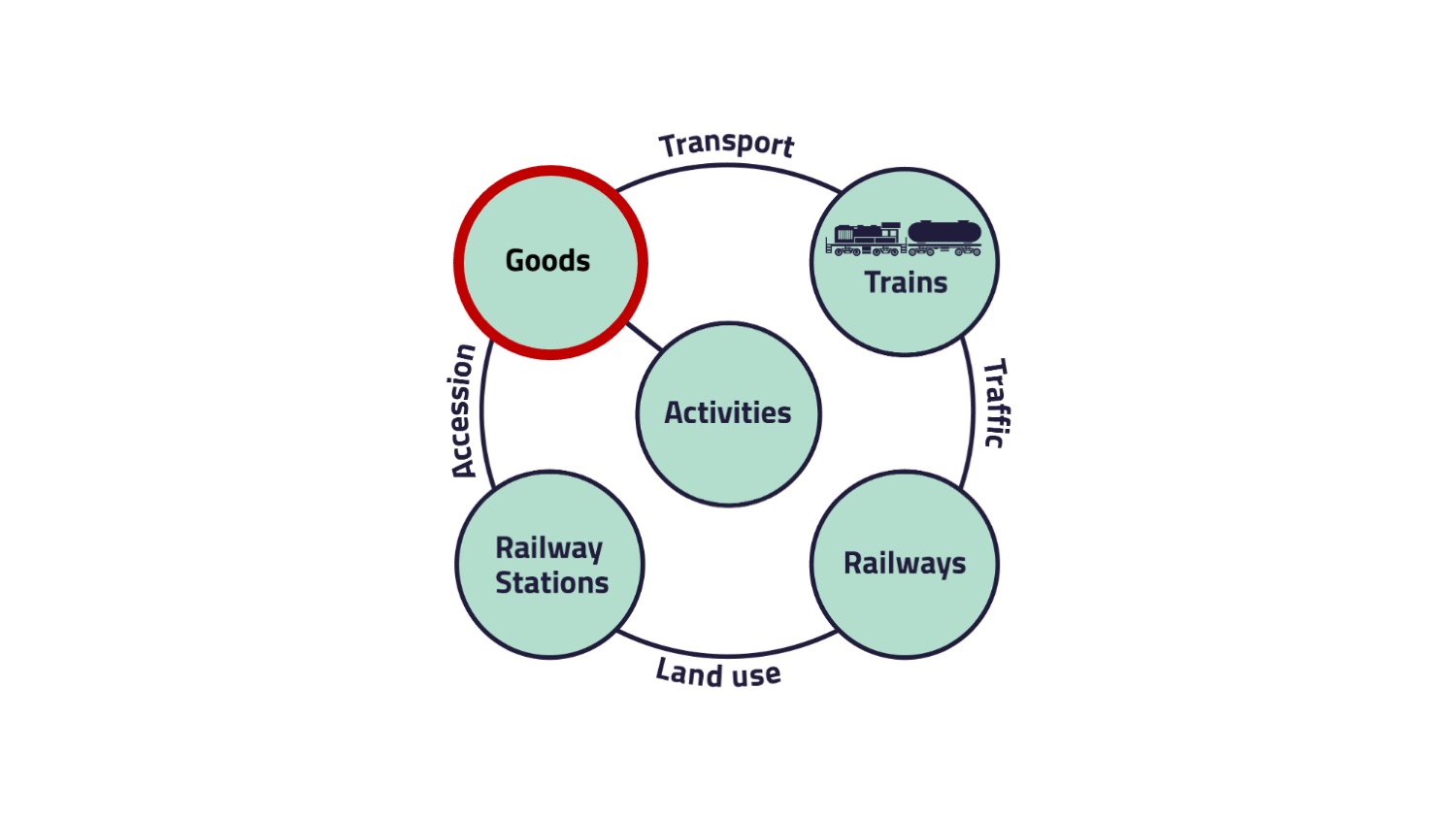Rail Transport System
3. Goods
The second element "Goods" of the conceptual system model relates to the goods transported by rail freight transport.

Typical goods that are being transported by rail are for example:
- bulk goods, e.g. iron, steel, etc.
- building materials as well as garbage and waste
- liquids, mineral oil and chemical products
- agricultural and forestry products
- consumer goods
- food and therefore perishable goods which must be temperature-controlled
- cars and car components
- hazardous goods
- heavy load transports and special transports
The relation between goods and trains is called transport.
As in road transport, the transport volume in rail freight transport is increasing in recent years. This development will be shown to you in the following paragraph.
Transport
The rail transport system plays an important role in freight transport in the United States, Russia and China. In Europe, Germany, France and Poland are the countries with the highest share of rail transport.
The transport volume and transport performance in Germany are rising, in particular due to the increase in the average transport distance from 192 km in 1992 to 331 km in 2019.
A "cut-off" was observed in all countries in 2009 due to the global economic crisis and the recovery in the past 10 years.
On the next page, the trains needed for rail transport are presented to you.
Literature
On the next page, the trains needed for rail transport are presented to you.
Literature
Bundesministerium für Verkehr, Bau- und Wohnungswesen (2004): Verkehr in Zahlen 2004/2005. 33. Jahrgang, URL: https://www.bmvi.de/SharedDocs/DE/Publikationen/G/verkehr-in-zahlen_2004-pdf.pdf?__blob=publicationFile (last access: 30.03.2022)
Bundesministerium für Verkehr und digitale Infrastruktur (2020): Verkehr in Zahlen 2020/2021. 49. Jahrgang, URL: https://www.bmvi.de/SharedDocs/DE/Publikationen/G/verkehr-in-zahlen-2020-pdf.pdf?__blob=publicationFile (last access: 30.03.2022)
European Commission (2020): EU Transport Figures. Statistical Pocketbook 2020. URL: https://publications.europa.eu/resource/cellar/da0cd68e-1fdd-11eb-b57e-01aa75ed71a1.0001.03/DOC_1 (last access: 30.03.2022)
Flämig, H., Sjöstedt, L., Hertel, C. (2002): Multimodal Transport: An Integrated Element for Last-Mile-Solutions? Proceedings, part 1; International Congress on Freight Transport Automation and Multimodality: Organisational and Technological Innovations. Delft, 23 & 24 May 2002. (modification of Sjöstedt 1996)
Bundesministerium für Verkehr und digitale Infrastruktur (2020): Verkehr in Zahlen 2020/2021. 49. Jahrgang, URL: https://www.bmvi.de/SharedDocs/DE/Publikationen/G/verkehr-in-zahlen-2020-pdf.pdf?__blob=publicationFile (last access: 30.03.2022)
European Commission (2020): EU Transport Figures. Statistical Pocketbook 2020. URL: https://publications.europa.eu/resource/cellar/da0cd68e-1fdd-11eb-b57e-01aa75ed71a1.0001.03/DOC_1 (last access: 30.03.2022)
Flämig, H., Sjöstedt, L., Hertel, C. (2002): Multimodal Transport: An Integrated Element for Last-Mile-Solutions? Proceedings, part 1; International Congress on Freight Transport Automation and Multimodality: Organisational and Technological Innovations. Delft, 23 & 24 May 2002. (modification of Sjöstedt 1996)